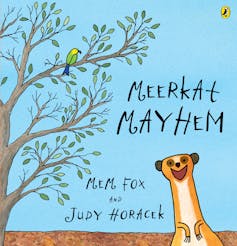I’m a children’s writer – and celebrity children’s books undervalue my craft
- Written by Penni Russon, Senior Lecturer, School of Communication, Monash University

I have been an editor and author of children’s and young adult books for over 20 years. I’ve taught writing for children and young adult fiction to hardworking and serious emerging writers since 2010.
So yes, it yanks my chain when I read that Keira Knightley has written and illustrated a “modern classic”: a children’s picture book called I Love You Just the Same, scheduled for publication next year. And of course, that Jamie Oliver pulled his children’s book last week, apologising (along with his publisher, Penguin Random House UK), for falling short when it comes to Indigenous representation. They join the likes of Madonna, Meghan Markle, Jimmy Barnes, Keith Richards and more.





